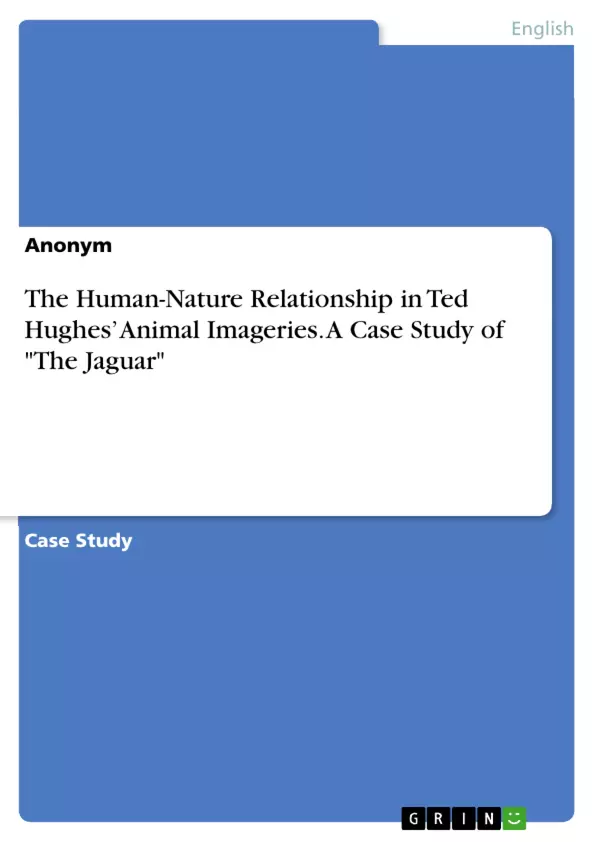Animals have played a major role in literature for thousands of years. At first, animals were used to underline religious or allegorical significance in literary texts. Aesop’s Fables, for example, are about talking animals and plants and often convey a moral message at the end. These fables have served as guidelines for people for almost three thousand years. In modern times, Ted Hughes is considered one of the most influential English poets of the second half of the twentieth century, particularly due to the impressive animal imageries he created. Hughes’ writing career started in 1957 when his collection of 40 poems named “The Haw in the Rain” was published.
Table of Contents
- Introduction
- Ted Hughes' Animal Imagery
- The Relationship between Mankind and Nature
- Analysis of “The Jaguar”
- Conclusion
Objectives and Key Themes
This paper examines the portrayal of the relationship between humans and nature through animal imagery in Ted Hughes' poetry. Specifically, it analyzes the poem "The Jaguar" to explore how Hughes uses this imagery to evoke emotions and reveal deeper truths about human nature.
- Ted Hughes' use of animal imagery to explore the human-nature relationship
- Analysis of "The Jaguar" and its depiction of the jaguar and zoo visitors
- The connection between Hughes' personal experiences and his animal poetry
- Hughes' exploration of the similarities and differences between humans and animals
- The impact of Hughes' animal imagery on the reader's understanding of the human condition
Chapter Summaries
- Introduction: This chapter introduces the theme of animal imagery in literature, highlighting the role of animals in ancient fables and the significance of Ted Hughes' contributions to animal poetry. It also explores the influence of Hughes' childhood experiences on his writing.
- Ted Hughes' Animal Imagery: This chapter delves into the concept of animal imagery in literature, focusing on how authors use animals to evoke images and emotions in the reader. It examines Hughes' unique approach to animal imagery, emphasizing his ability to connect human emotions and animal characteristics.
Keywords
The main keywords and focus topics of this paper are: Ted Hughes, animal imagery, human-nature relationship, "The Jaguar", poetry, symbolism, emotional impact, zoo, wild animals, human condition, and the nature of language.
- Quote paper
- Anonym (Author), 2020, The Human-Nature Relationship in Ted Hughes’ Animal Imageries. A Case Study of "The Jaguar", Munich, GRIN Verlag, https://www.grin.com/document/1266585




